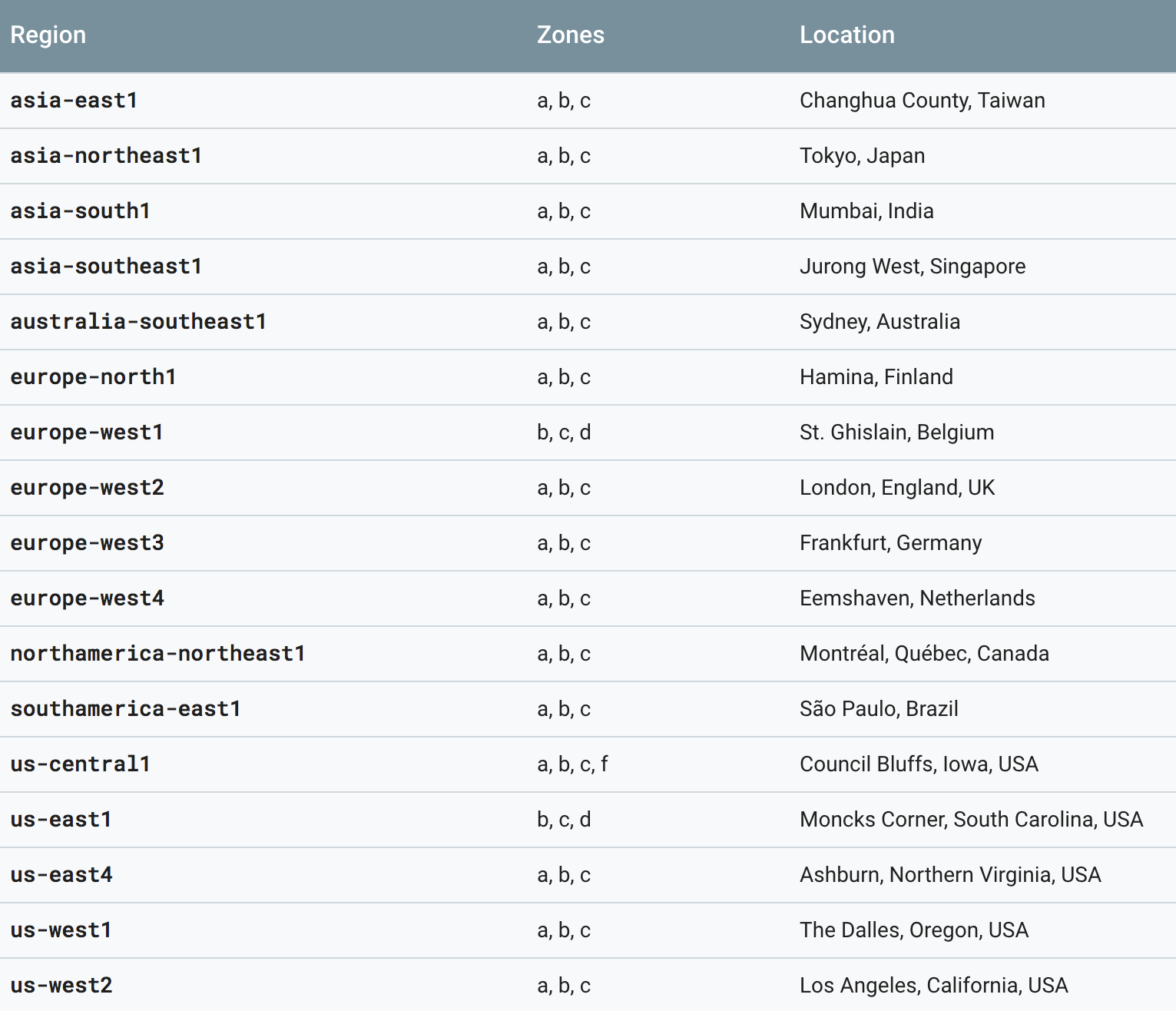GCP services are located across North and South America, Europe, Asia, and Australia. These locations are further divided into regions and zones. A region is an independent geographic area that consists of one or more zones. In total, Google has about 17 regions, 52 zones, and over 100 points of presence (points of presence is a local access point for an ISP). Each zone is identified by a letter, for example, zone a in the US-Central region is named us-central1-a.
When you deploy a cloud resource, they get deployed in a specific region and in a specific zone within that region. Any resource deployed in a single zone will not be redundant—if the zone fails, so will the resource. If you need fault tolerance and high availability, you must deploy the resource in multiple zones within that region to protect against unexpected failures. A disaster recovery plan will be needed in order to protect your entire application against a regional failure.
All regions are expected to have a minimum of three zones:

The roundtrip latency of networks between zones within a region is less than 5 ms:
|
Current regions and number of zones |
Oregon, Los Angeles, Iowa, South Carolina, North Virginia, Montreal, Sao Paolo, Netherlands, London, Belgium, Frankfurt, Mumbai, Finland, Singapore, Sydney, Taiwan, Tokyo |
|
Future regions and number of zones |
Hong Kong, Osaka, Zurich |


